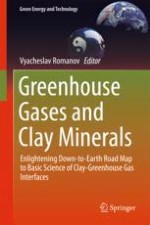2018 | OriginalPaper | Buchkapitel
4. Clay Mineralogy
verfasst von : Bret H. Howard, Jonathan W. Lekse
Erschienen in: Greenhouse Gases and Clay Minerals
Aktivieren Sie unsere intelligente Suche, um passende Fachinhalte oder Patente zu finden.
Wählen Sie Textabschnitte aus um mit Künstlicher Intelligenz passenden Patente zu finden. powered by
Markieren Sie Textabschnitte, um KI-gestützt weitere passende Inhalte zu finden. powered by
